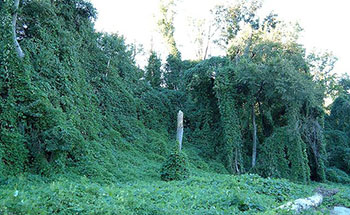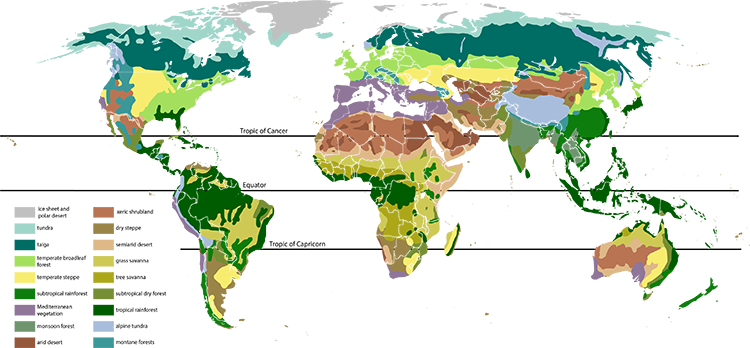Oh Exotic One – Where Did You Come From?
By Environmental Management System
January, 2014

Photo courtesy of Scott Ehardt
Exotic invasives are everywhere and North Carolina is no exception. A study by Pimentel, D., R. Zuniga, and D. Morrison in 2004 estimated that there are approximately 50,000 exotics/aliens in the U.S. Corn, L.C. et al (1999) calculated that there were 4,300 exotic invasives. These numbers are probably low since they reflect the numbers from a decade ago.
Where did the exotics come from and how? There are many sources and origins with the majority linked to - Africa, Asia, China, Europe, India, South America, Australia, and even between regions within the U.S. These temperate continents have certainly provided their share of species and most likely will continue to do so. Through the centuries, species have entered the U.S. by various routes, sometimes being introduced intentionally, other times unintentionally. Here are some of the ways species have entered and spread.
- Aquarium, water garden stocks, and pet trade
- Ballast water discharge from ships
- Canals and changes to waterways, including breeches and flooding
- Erosion control, roadside stabilization
- Food resource (“old country” plants and herbs) brought by immigrants
- Food resource (“old country” animals) brought for hunting
- Gardening and landscaping, horticulture plants, seed distribution
- Land clearing and disturbance
- Mail order products from the Internet
- Medicinal herbs and products
- Movement of live fish and bait, pond stocking
- Movement or transport of topsoil and mulch
- Off road vehicles and activities (camping)
- Pest control, biological control
- Recreational and commercial boating
- Transport of animal carcasses or products made from them
- Transport of raw wood and other forest products
- Violent storms (tornados, hurricanes)
- Water transport and using water for dust control on roads
We rely on Environmental Biologists, Ecologists and organizations like the North Carolina Native Species Society, North Carolina Botanical Garden, Mid-Atlantic Exotic Pest Plant Council, USDA SRS, and National Park Service, to mention only a few, to provide education and help to designate organisms that have become or might become problematic.
Because invasives are defined by the ecosystem being evaluated, what may be considered a threat one place may not have the same impact in another. Once again the 4Ws (who, what, when, and where) influence what may be included on the lists of species. Certainly the exotic must easily adapt, be prolific with few controls, and disturb biodiversity and biosystems.

Original graphic courtesy of S4uri3r
We have provided some examples of the most notorious invasive plants, animals, and microbes (pathogens). Some you’ll know but maybe some will surprise you. Presented now are some organisms that require watching closely.
References
Corn, L.C., E.H. Buck, J. Rawson, and E. Fischer. 1999. Harmful Non-Native Species: Issues for Congress. Congressional Research Service Issue Brief, RL30123.
Pimentel, D., R. Zuniga, and D. Morrison. 2004. Update on the environmental and economic costs associated with alien-invasive species in the United States. Ecological Economics Volume 52, Issue 3, 15 February 2005, Pages 273-288

